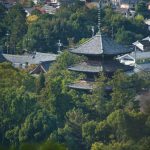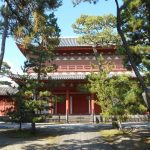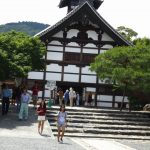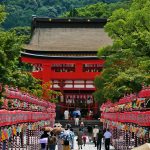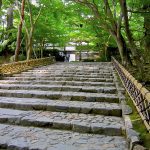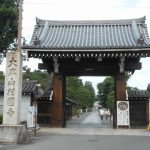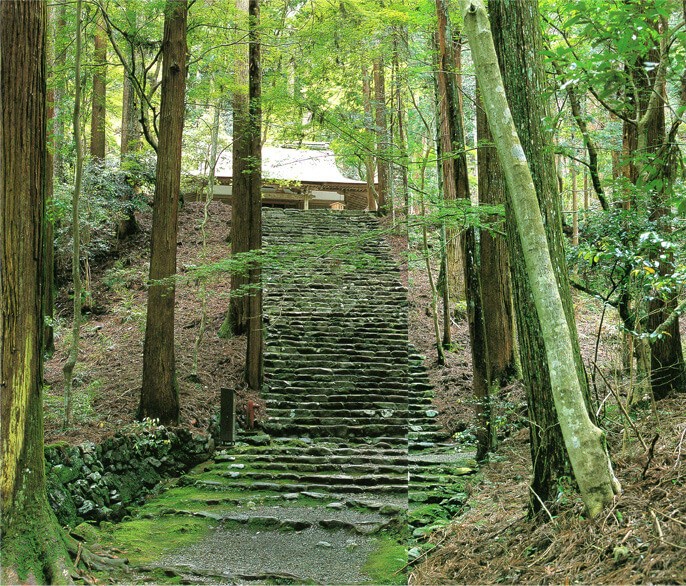
ページの目次
Kouzan-ji Temple(高山寺)
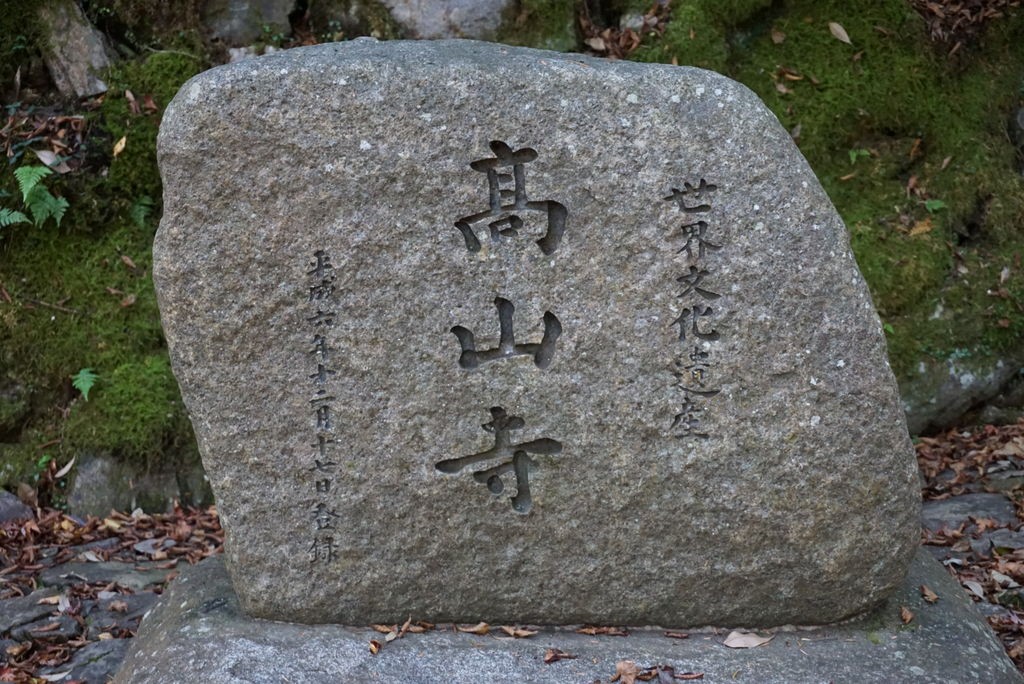
1. Location-Access
This temple is located in the mountain of Mt.Tgano,Rakuhoku area to North/West of Kyoto.
It can take 55 minutes from Kyoto station to Togano bus stop. by JR bus.
(この寺は京都北部、洛北エリアの栂ノ尾山中に位置する。
JRバスで京都駅から栂尾まで約55分要する。)
2. Who was built this temple?
1) Kouzan-temple belongs to the Shingon Sect. and is enshrined the Syaka Nyoriai Buddha.(高山寺は真言宗に属し、釈迦如来が安置されている。)
2) It was established at beginning of 13th century. A holy named Myoe restored the temple, originally built in 1774 by the order of retired Empeior Gotaba
and renamed it “Kouzan-ji”.
(高山寺は774年に開創された寺で、13世紀初頭に後鳥羽上皇の命により、明恵上人が
復興して高山寺と改称した。)
3) At the time of restration,the temple comprised a number of building, including Kondo (main hall), Amida Buddha hall, 13 soried pagota and eastern and western sutra repositories..
(復興当初は、金堂、阿弥陀仏、十三重塔が立ち並んでいた。)
4) It fell into decline during Seengoku period of middle of ages, but was restored in 1631 during the Edo period(1603-1867).
(その後、中世の戦乱期に荒廃し、江戸時代(1603-1867) 1631年に再興した。)
3. What is this temple famous for ?
1) A large number of treasures 数多くの宝物
In its precincts there are famous buildings, including the Sekisui-in(residence, National Treasure), the Kondo(main hall, Important cultural prosperty), the Kaisan-do(hall commemorating the foulder, Important cultural property) and others.
(境内には、「石水院」(国宝)、「金堂」(重要文化財)、「開山堂」(重要文化財)など有名な
建造物がる。)
① Sekisui-in 石水院
The Sekisui-in is the only surviving structure that dates from Myoe’s time.It is a residential structure evoking the atmosphere of Kamakura period(1185-1332).
(石水院は明恵上人時代の唯一の遺構で、13世紀前半に建てられた住宅風な建築で
鎌倉時代の雰囲気を漂わしている。)
② Kon-do(main hall) 金堂
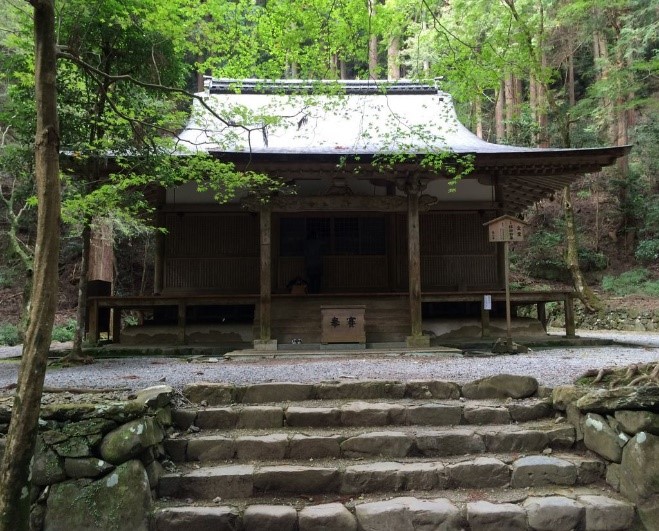
The Kon-do was destroyed by fire in the Muromachi period(1336-1573).
The extant building is said to have been transferred from the Ninna-ji in 1634, during the Edo period. The image of the Dainichi-nyorai Buddha is enshrined as the main object of worship.
(金堂は室町時代に焼失し、現存するものは江戸時代の1634年仁和寺から移築されたのもと伝わっている釈迦如来像を本尊としている。)
③ Kaisan-do 開山堂
The Kaisan-do is the building commemorating Myoe. It was also destroyed by fire the Muromachi period and rebuilt during Edo period.
(開山堂は明恵上人を偲んだ建造物で、やはり室町時代に焼失し江戸時代に再興された。)
2) Chouju Jinbutsu Giga(caricatures beasts and human being)鳥獣人物戯画
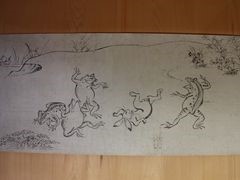
① The Kouzan-ji possesses many paintings, craftworks and documents designated as National treasures and Important cultural properties, including the World-famous Chou-ju Jinbutsu Giga.
(高山寺は数多くの絵画、工芸品、古文書を国宝、重要文化財として、所蔵しているが、鳥獣人物戯画(国宝)は世界的に有名である。)
② Visitors can see what is considered japan’s first manga, a scroll depincting animals in a satire of Court life of Heian period(794-1332).
(観光客は日本最古の漫画である平安時代宮廷生活を風刺した動物を描いた絵巻を見れる。)
③ Reflecting the social conditions of the time, the scroll Otsu in which rabbits ,frongs and monkeys were personaified and dipcted is very famous.
The current configuration consists of 4 volumes.
(当時の世相を反映して、トラ、カエル、サルなど動物たちを擬人化し描いた甲巻が非常に有名である。現在の構成は、全4巻からなる。)
3) The birthplace of Japanese tea 日本茶の発祥地
① The priest Myoe is said to have planted tea plants given to him by Zen master Eisai
in the tea garden on the temples grounds at the beginning of the Kamakura
period(1185-1332), lauching the spread of tea cultivation throughout the country.
(鎌倉時代初期に、明恵上人は、境内の茶園に栄西から贈られた茶種を植え。そして
ここから全国に茶が普及したと言われる。)
② In recognition of this history, tea products from Uji make an offering of new tea in front of temple’s Joninbyo each November.
(この由緒から毎年11月に宇治茶の製造業者から新茶が上人廟前に献上される。)
③ On the opposite side of the Kiyotake-river fron the Kouzan-ji was a tea field.
It is said to have been the oldest tea field in Japan.
(清滝川を挟んで高山寺の対岸にあった茶園は、日本で初めて茶を栽培したと言われ、日本最古の庭園である。)
